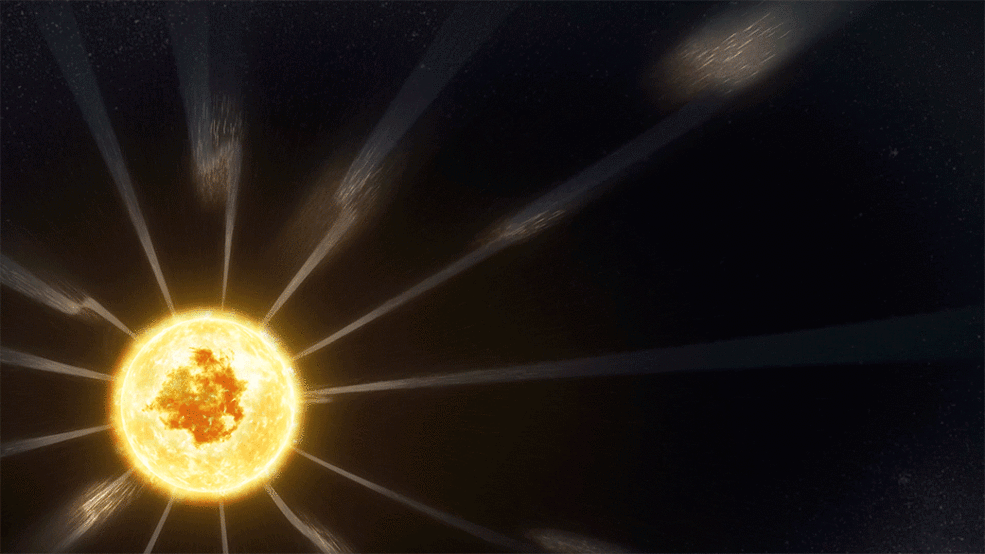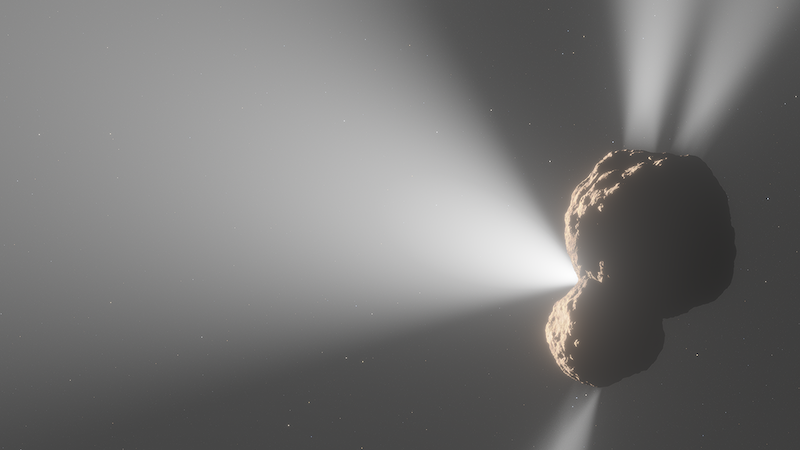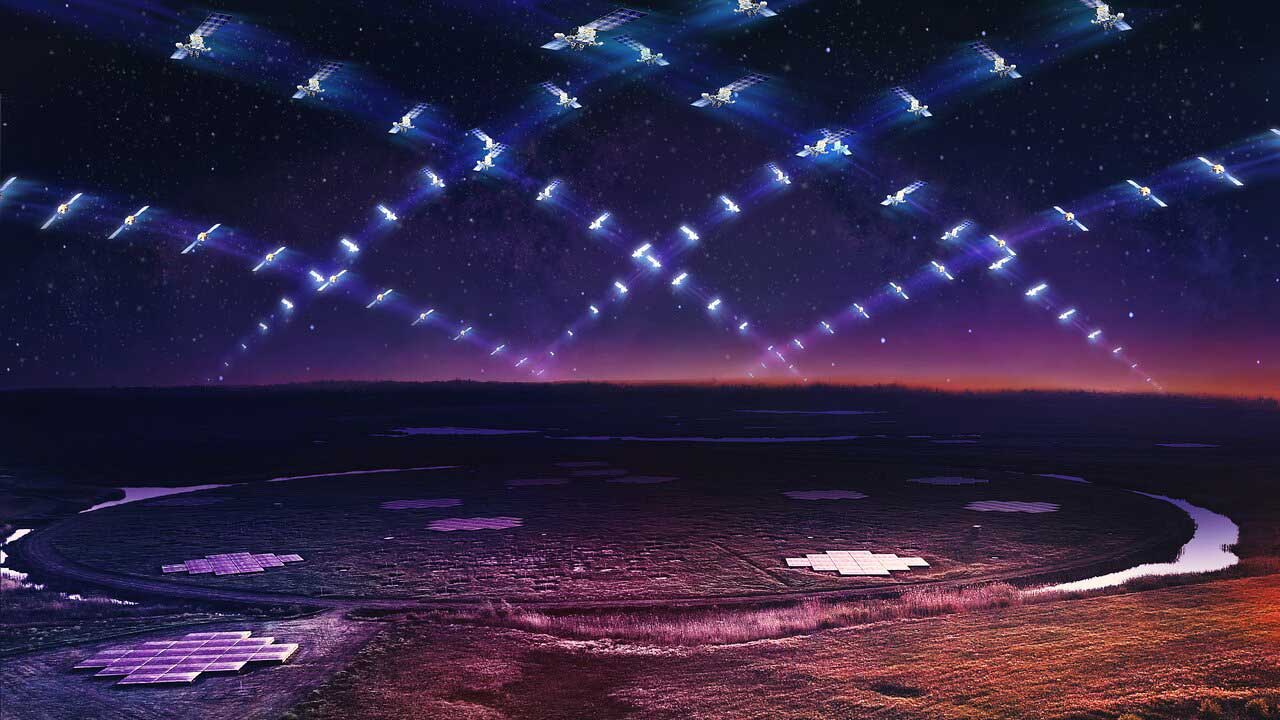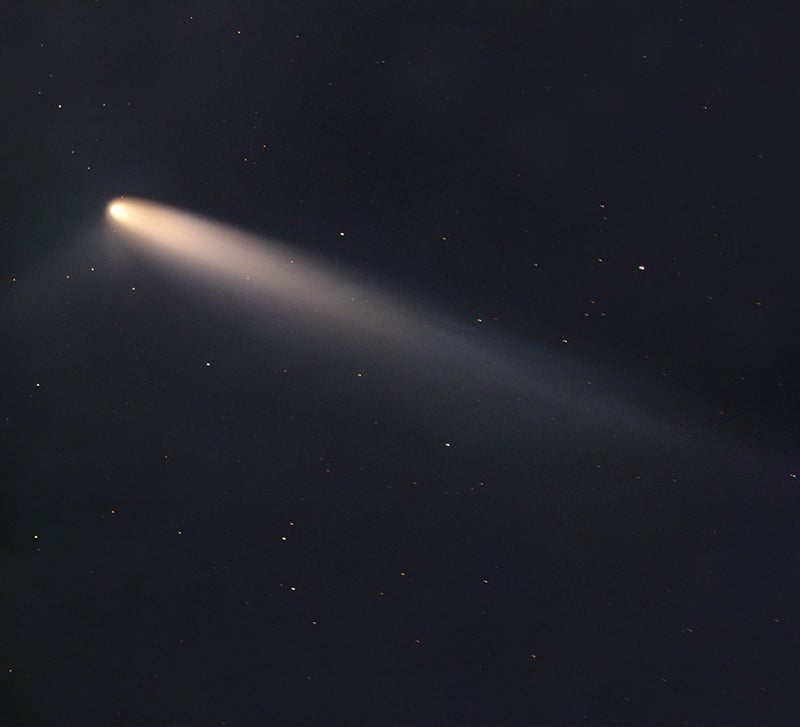NASA / Conceptual Image Lab / Adriana Manrique Gutierrez
Inside the solar system, space isn’t empty. The Sun sends out a constant flow of charged particles in every direction called the solar wind. One of the enduring mysteries of this wind concerns how exactly it’s energized. Now, using a unique alignment of two probes that orbit the Sun, a team of scientists might have figured it out.
In a recent study published in Science, Yeimy Rivera and Samuel Badman (both at Center for Astrophysics, Harvard and Smithsonian) led a team that capitalized on an intersection in the observation windows of two different solar probes: NASA’s Parker Solar Probe and ESA’s Solar Orbiter. The spacecrafts’ alignment in space enabled them to measure the same stream of fast solar wind from two different viewpoints. The study concluded that Alfvén waves, which carry energy from the Sun along magnetic field lines, are powering the wind’s heating and acceleration.
Switchbacks and the Fast Solar Wind
There are two main types of solar wind: fast and slow. Slow solar wind particles move outward at “only” 300 to 500 km/s (700,000 to more than 1 million mph), while fast solar wind flows at up to 800 km/s (almost 2 million mph). The heat from the Sun’s outermost atmosphere, known as the corona, is enough to drive the slow solar wind — but it can’t fully explain the faster particles.
For many years, scientists have suspected that Alfvén waves help power the fast solar wind. In this phenomenon, something sets charged plasma particles wiggling back and forth. Because they’re charged, they strum magnetic field lines like guitar strings, causing them to oscillate, too. Alfvén waves could thus generate enough energy to accelerate the solar wind — but direct measurements were hard to come by.
To quantify Alfvén waves’ contribution, Rivera’s team utilized data from a unique event in February 2022, when the Parker and Solar Orbiter crossed the same solar wind stream within two days of each other. Parker crossed the stream when it was near the outer edge of the corona, then Solar Orbiter crossed the same stream near the orbit of Venus.

Yeimy Rivera and Samuel Badman; Data source: Solar Dynamics Observatory
That stream contained patches of switchbacks, where the Sun’s magnetic field undergoes rapid reversals, like the zig-zagging pattern of a mountain road. These reversals carry the solar wind along with them, creating zig-zags in the wind itself. Scientists think switchbacks originate in Alfven waves. By measuring the change in the energy of Alfvén waves at subsequent points, the team showed that the motion and heat energy gained by the plasma over that span matched the energy lost by the Alfvén waves.
The study demonstrates the first definitive connection between these switchback events and the acceleration of solar particles. However, we don’t see nearly as many switchbacks at Earth as we do close to the Sun, and we don’t yet understand how the zig-zags ultimately relax and merge with the wind. The team intends to gather more data in this way to continue to study the forces driving the solar wind.
Scheduling More Meetups
Victor Réville, (Institute of Research in Astrophysics and Planetology, France) who was not involved in the study, welcomes further observations, suggesting that it’s still early days and the mystery isn’t yet solved.
“This paper is proposing a serious method, and I’m actually not sure why it hasn’t been done before!” Réville says. “Their analysis and results are robust. But it’s only focused on one event, so I don’t think it provides a definitive answer on the contribution [of Alfvén waves].”
The team is also keen to emphasize that the potential of this research goes beyond better understanding space weather in the solar system. Any star similar to our Sun will also have stellar winds, so improving our knowledge about the general mechanisms will help us understand the environments of other star systems.
“We’re learning a lot of very fundamental plasma physics from the Sun,” Rivera agrees. “And that’s incredibly important to understanding other stars, stellar winds, and how they operate, and how that then translates to other systems, other planets and potentially, habitability.”





No comments! Be the first commenter?